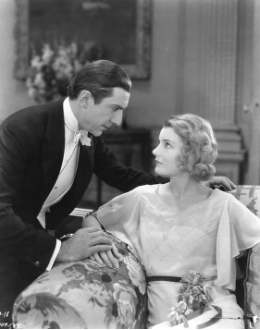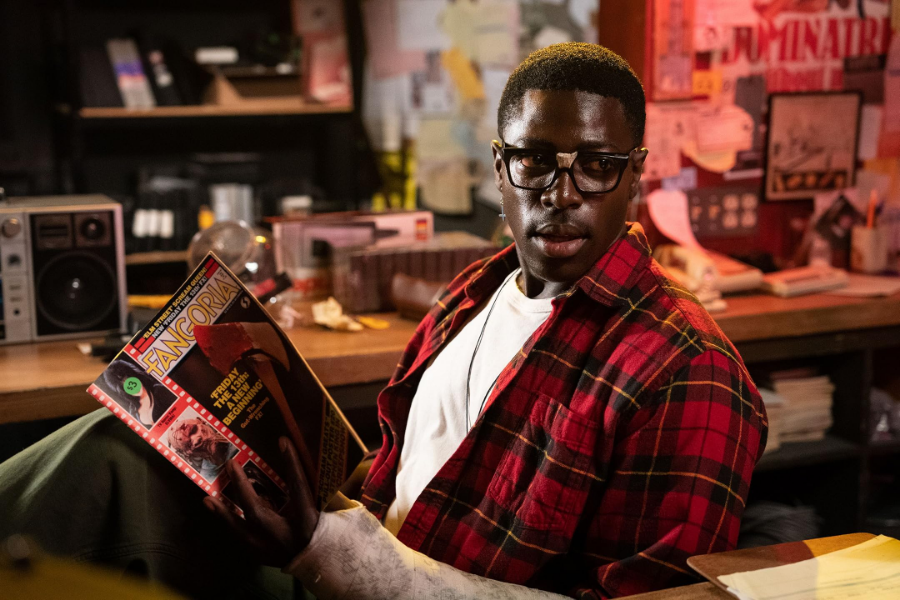Wednesday, July 24, 2024
Pedro Costa Captures Singer Jeanne Balibar on Stage and in the Studio in Ne Change Rien
Wednesday, July 10, 2024
Bram Stoker and Thomas Harris Collide in Oz Perkins' Serial Killer Thriller Longlegs
Wednesday, July 3, 2024
A Dazzling Mia Goth Will Stop at Nothing to Achieve Her Silver Screen Dreams in MaXXXine
Saturday, June 22, 2024
Whatever This World Can Give to Me: Annie Baker's Janet Planet with Julianne Nicholson
Wednesday, June 19, 2024
A Hyper-Masculine Subculture Roars to Life in Jeff Nichols' Biker Club Exposé The Bikeriders
 |
| Kathy, Chicago, 1966 / Danny Lyon |
 |
| Danny Lyon in motorcycle mode |
Saturday, June 8, 2024
Stranger Flashback: Paul Williams at the Egyptian with Director Stephen Kessler
I'm sure Oscar-winning singer, songwriter, and actor Paul Williams has a few young fans scattered here and there, but if you're a person of a certain age, like me, he's an icon. Not "kind of an icon" or "sort of an icon," but an icon. Full stop. And the reason is simple: he ruled the 1970s. His songs, like the Carpenters' "Rainy Days and Mondays" and "We've Only Just Begun" were all over the radio, and every time you turned on the television, there he was: guesting on Baretta, Police Woman, and The Tonight Show. Johnny Carson was such an ardent admirer he had Williams on 50 times.
But then, as the '70s gave way to the '80s, the ubiquitous entertainer's drug use got the best of him, and he disappeared. Director Stephen Kessler, who appears to be around my age, decided to find out what happened to his childhood hero--as the title indicates, he thought Williams had died. That inquiry led to the documentary Paul Williams Still Alive, which premiered at the Egyptian on Friday as part of SIFF's Face the Music series.
I was interested in the film from the start, but once I found that Williams would be at the screenings, it became a can't-miss event, and it was definitely worth my while, for both the documentary and the revealing Q&A.
During the brisk, 87-minute movie, Kessler concentrates on the '70s and the present, skipping over the '80s and the '90s.
It's a wise move, since most addiction stories play out in a similar manner. As it is, we get enough footage of Williams rubbing his nose during a variety of talk-show appearances—The Mike Douglas Show, The Merv Griffin Show, etc.—to get the point: he had a problem with cocaine.
In the Q&A, Williams describes the cynical, self-pitying person he became as a "prick." Sober now for 20 years, he's back on the road with his band.
During the documentary, Kessler travels with the artist to engagements in Las Vegas, San Francisco, Winnipeg, and the Philippines. If he's no longer at the top of his game—his singing voice has taken a few hits—nor is he at the bottom. Most recently, he's been working on a Happy Days musical and a top-secret project with Daft Punk (this turned out to be the song "Touch" off their final album, 2013's Random Access Memories -KF).
And Kessler doesn't skimp on his adventures in movieland, like the compositions he wrote for A Star Is Born, Ishtar, and The Muppet Movie. If he won the Oscar for the former, he admits that "The Rainbow Connection" ranks among his favorite self-penned creations—and I'm right there with him. While he describes Kermit as an "everyfrog," much like Jimmy Stewart's everyman in all those Frank Capra classics, he proclaimed a special fondness for Gonzo. He also gave a shout-out to the late William Finley, his co-star in Brian De Palma's Phantom of the Paradise (and a regular presence in De Palma's output from the '60s through the '00s).
I should note that Kessler inserts himself into most of the modern-day material, which can be problematic when a filmmaker steals the spotlight from his star, but in this case it works, because Kessler, a commercial director, makes a few rookie mistakes—like interrupting his subject a time or two—and he allows Williams to upbraid him on camera.
In every case, Williams is right, so they start out as antagonists, and end up as friends. Or at least friendly collaborators. It's actually kind of sweet, though I suspect some viewers may find Kessler's outspoken Queens persona a little boorish--I didn't, but then, I've got New York roots, too.
After the screening, Paul Williams joined singer/writer Sean Nelson at the Sorrento Hotel for a set of cover songs, a fit that makes perfect sense when you consider how much '70s-era Williams, at times, sounded like Harry Nilsson, another favored Nelson singer and composer. Not too surprisingly, Williams also appears in John Scheinfeld's fine documentary portrait, Who Is Harry Nilsson (And Why Is Everybody Talkin' About Him?)
Paul Williams Still Alive played the Uptown the next day with Kessler and Williams in attendance. If you missed out, it opens at SIFF Film Center on July 13. Fantastically blurry photos of the director and subject by me.


























